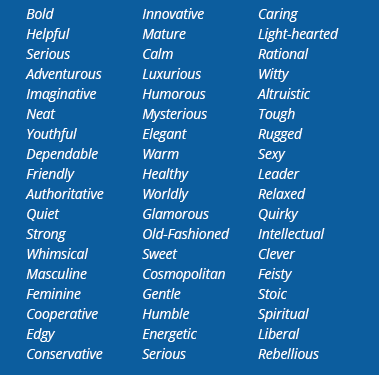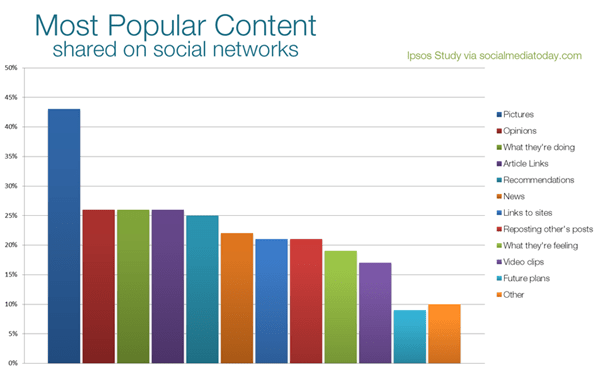Part 4. Make your personality count
This is the forth post on online marketing strategies for SMBs.
- The first part covers tools for improving your search ranking.
- Then come your content strategy
- and content promotion using social media.
And what about personal branding? For me, the concept is too artificial. Too vague. Too misleadingly promising.
Branding was created to add human characteristics to products and companies to make them more appealing to humans. By offering functional and emotional benefits associated with a brand, you are creating a relationship with your audience.
But people are building their professional reputation and not a brand. You already have your functional and emotional benefits (or personal branding is useless for you anyway). It’s high time to make your benefits visible.
You all know that stuff: Create your personal brand. Become a conference speaker. Get the media attention. Write an e-book. Position yourself as an expert in your field and build your tribe. But how could possibly every professional be a well-known expert or every company be innovative?
I don’t say it’s the wrong path. Follow it if you feel inclined. You’ll find tons of ‘expert advice’ on the topic. But I speak of making your offer visible out there.
In the era of online communications and search engines, your personality matters. For a small online business without brick-and-mortar or an office open to the public, the name becomes your store window and your legacy.
References are bread and butter for freelancers. But chances are high that a potential customer will google your name if they are interested in a service partner. Solid reputation attracts better clients for freelancers. Defining your personal and business benefits also facilitates SEO.
To take your reputation and career from obscurity to visibility, you need a carefully planned strategy with a strong focus on content marketing, a fuel for your online presence.
1. Shaping your story
Brands can teach us invaluable marketing lessons. For instance, you need to be clear and direct when you present what you do. What are you great at doing anyway?
Think of what is important to you, what you do and do not stand for. Imagine an internal compass that determines your choices and actions. Make it three sentences or even less. Or use phrases, words or bullet points if that suits you.
Craft a narrative if you feel comfortable with it. How did you get started? Why do you specialise in certain areas? Why does your business exist? Who have you worked with and what did you do for them? What have you learnt along the way?
Whenever there is a chance for deeper engagement, be ready to present your skill-set and knowledge that set you apart in a sea of your competitors. Keep in mind your listeners and readers have a short attention span. That’s why a story crafted thoughtfully and structured carefully is a must. Fill out your profiles on the About Me area of your website, blog and/or social media.
While your profile will vary for different media, generally you’ll have:
• Your name (as people would search for it).
• Social accounts associated with you.
• Your profile picture (preferably the same for every account).
• Relevant keywords describing what you do.
• A tone that reflects your personality.
• A strategic link or call to action.
2. Crafting your style and tone
This step isn’t absolutely required, but it can help you stand out.
If you feel you are reasonably confident about your design skills, there are many free online resources and tools can help you—from articles on branding to colour palette generators and design tools like Canva.
But style is not all about fonts and colours. What’s your tone of voice when communicating with your audience? For your image to be authentic, it should be consistent with your values and personality.
Below you will find ideas from brand creators (The source.)
Try to make a list of keywords thinking about how you plan to be perceived by your target audience and how you want to make them feel. Be yourself or create a persona if that seems more suitable for you. The picture below shows the process of linking keywords to archetypes when defining a personality for a brand but you can use it, too.
Having an angle will give a unique perspective that will mark each piece of content you develop as yours. Why write a cover letter when you can send a video version?
3. Choosing your channels
Next, it’s time to add your online persona to your professional assets.
Online channels are very diverse and may include a website, blog, online portfolio, social media profiles, directories and third-party sites. All of them need to be consistent with your message and style.
Don’t forget that SEO is one of the key tools connecting you to the people who are potentially interested in your knowledge and services. If you want Google to index your information in a really good way, you need a uniform and consistent vanity URL for Facebook, Twitter, LinkedIn, etc. Not sure if a preferred URL is available? Check your name at www.namechk.com.
Start writing about what you know and share your personal point of view. Don’t worry about gaining thousands of follows and views. The point is to offer the right people access to your insights and get a glimpse of your professional value when they need it.
Your online persona is not a costume or a disguise. It means your real reputation and the authentic you with the unique talents you possess. Whatever channels you choose, stay true to the real you and maintain consistency.
(That does not mean publicly sharing the after-party photos and discussing your personal relationships or lack thereof. Your digital shadow is much longer than you possibly presume.)
4. Planning the content
Keeping your online presence consistent and updating your spaces with quality content on a regular basis will help you gain exposure.
Every expert should be blogging, they say. Yes, a blog can be your essential tool for SEO but not everyone is ready for regular blogging. Let’s consider other options. What else can you create?
Visual content for social media: images with captions, quotes, headlines. These are readily shared, easy to make and you are free to experiment.
Videos published on YouTube, Vimeo are becoming the dominant force in content marketing. They drive high engagement but can be demanding to create. Don’t forget transcripts (at least partial) for SEO.
Case studies: stories of your clients’ successes. These are a great boost for your credibility. You do not need a website or a blog to use them. Why not share a case study on your LinkedIn profile? Include specific information and conduct interviews to get quotes.
Insights covering professional activity: updates on your professional development and certificates, book and tool reviews, pictures of your projects and processes, etc.
Look for more content strategy tips and ideas in Part 2 of this series.
5. Providing social proof
When prospective customers encounter your brand, they want to be sure you are trustworthy. Moreover, people want to know what is behind your products and services in a way that shows them that you care and that you are dedicated to solving their problems.
If you have great recommendations on LinkedIn, consider sharing a hyperlinked excerpt that will direct the reader to your LinkedIn page. You can use them in a similar way in a cover letter or on your personal site. When making decisions people rely heavily on the opinions of others.
Other things you can use to convince people that you really know your stuff include:
- Academic degrees
- Certifications
- Awards
- Publications
- Presentations
- Important projects
- Associations
- Affiliations
- Speaking videos
Let your reputation, however you choose to present it, speak for itself. Don’t sell people what you do—share the results to become recognizable. Your achievements are much more tangible than a list of your skills.
Craft your story and convey it to the marketplace in a strategic, consistent manner. Without it, many people will miss your products and services. Add a personal touch to everything you do because people buy from people they know and like.












